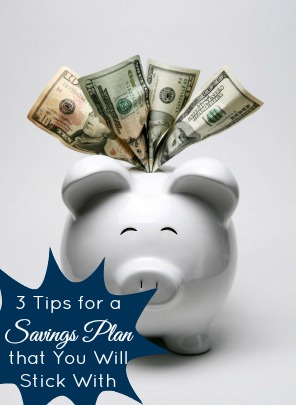 Am I right when I say that most of us wish we had more money saved up for those rainy days? If you are like J and I then you are saving for a specific goal in mind, like a new car, vacation or in our case, a down payment on our first house.
Am I right when I say that most of us wish we had more money saved up for those rainy days? If you are like J and I then you are saving for a specific goal in mind, like a new car, vacation or in our case, a down payment on our first house.
With 2014 rocking and rolling it’s time to really get started on those resolutions that we set, right? If you’re like me, some of my resolutions involved saving more money. I dreamed big and I want to make sure that I reach my goals. Here are some tips to get off on the right foot and to make sure you create a savings plan you will stick to:
1) Set the magic number. Don’t be overzealous and chose a monthly savings amount that is half your take home pay. Make sure that you can survive, comfortably if you are setting back an amount each month. Take a look at your monthly bills and expenses to see where your money is going. Then decide, as a team what amount can be put into savings. If you find yourself wishing to put more aside each month then take a good hard look at your discretionary spending like eating out and see what you can cut down.
2) Pick where the money is going to go. This might sound strange, but it’s important to know where your savings is going to go, as in – which account will the money be housed in. There are many different options out there, but the key point is that you do not want it easily accessible. With that said, you want to be able to reach your money within a few business days in case of a real emergency, but you don’t want the ability to make a few simple clicks of the mouse and clean out your hard earned savings account. What worked for us was having our account at a separate bank then our day-to-day checking account. That way if we need money, we have to make the effort of going to the bank with our savings and make a withdraw. That extra step keeps us reminded of what we are working towards.
3) Set the plan in motion. The final step in setting up a savings plan is getting it started. Once you come up with the amount and the place the money will be housed then the next step is to pick a start date. If you are in between pay periods then it might be best to wait until the next payday. That way you can start with clean slate and have a positive start.
Also, I have found that we have the best success when we pull out our money for savings as soon as we receive our paychecks. That way the money is out of sight and we are left the amount of money that we have budgeted for. It helps eliminate the temptation to over spend.
Latest posts by Meredith Rines, MBA, CFP® (see all)
- How To 10X Your Productivity With This Simple Tool // Using A Red Line Graph - June 24, 2020
- Mini DIY Office Makeover [Photowall Review] - June 17, 2020
- How To Track Your Projects and Profit With Subcontractors - June 11, 2020




